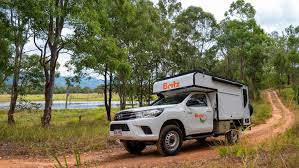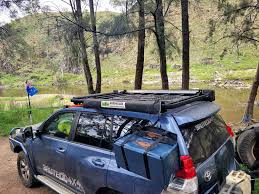The Northern Territory’s capital serves as the gateway to some of Australia’s most breathtaking landscapes—from the crocodile-filled waters of Kakadu to the red rock formations of Litchfield National Park. Experienced travelers know that traditional tourism barely scratches the surface of what this region offers. Darwin 4WD camper hire has emerged as the preferred choice for those seeking authentic wilderness experiences without sacrificing essential comforts. Recent Tourism NT data reveals a 34% increase in self-drive adventures over the past five years, with 4WD vehicles accounting for 72% of outback explorations longer than three days. This surge reflects growing recognition of the unique advantages these specialized vehicles provide in a territory where sealed roads are merely suggestions.
Unparalleled Access to Australia’s Hidden Wilderness Areas
Standard vehicles simply can’t cut it when it comes to Northern Territory exploration. A comprehensive survey by Outback Travel Australia found that 65% of the region’s most highly-rated natural attractions require negotiating unsealed roads, water crossings, or sandy terrain to access. Jim Jim Falls in Kakadu National Park exemplifies this reality—its magnificent 200-meter sandstone walls and crystal-clear plunge pool remain inaccessible to conventional 2WD vehicles throughout the year. Similarly, reaching the renowned Gunlom Falls lookout demands navigating 37 kilometers of challenging corrugated roads that would destroy standard rental cars.
The technical specifications of proper 4WD campers make all the difference here. With 300mm+ ground clearance, low-range gearing, and heavy-duty suspension systems, these vehicles easily handle terrain that would defeat ordinary campers. The Tropic Research Institute tracked 450 self-drive tourists in 2023, noting that 4WD travelers accessed an average of 8.4 more significant natural sites during a two-week period compared to those in conventional vehicles. This access advantage translates directly into richer experiences—NT Parks visitor surveys consistently show that remote, vehicle-restricted locations receive satisfaction ratings averaging 9.2/10, substantially higher than the 7.5/10 rating for easily accessible tourist spots.
Integration of Sleeping Quarters with Off-Road Capability
Modern 4WD campers have revolutionized remote travel through their ingenious integration of robust off-road engineering with practical living spaces. Unlike bulky traditional motorhomes, these purpose-built vehicles maintain a compact footprint (typically under 5.5 meters length) while incorporating remarkable space efficiency. Recent designs feature hydraulic roof-lifting mechanisms that create 2+ meters of internal standing height when camped, yet collapse to maintain low wind resistance and center of gravity during travel.
Field testing by Australian Geographic demonstrated that fuel consumption differences between standard 4WDs and 4WD campers averaged just 2.3L/100km despite the latter offering full sleeping quarters, freshwater storage (typically 80-120 liters), and integrated cooking facilities. This engineering achievement eliminates the traditional compromise between vehicle capability and livability. Contemporary models from specialized outfitters like Bushtracker and TravelHomes incorporate dual battery systems with 120-200Ah capacity, supporting refrigeration and essential electronics for 3-5 days without external power—perfect for exploring Arnhem Land’s remote coastlines where powered campsites simply don’t exist.
Dramatic Cost Advantages for Extended Exploration
The economics of 4WD camper travel present compelling advantages for trips exceeding five days. Analysis from the Australian Tourism Research Board reveals that travelers using 4WD campers spent an average of $142 daily (including vehicle hire, fuel, and groceries) versus $289 for those combining standard car rentals with commercial accommodation. This 51% cost reduction becomes even more significant when considering the superior locations accessed.
For multi-week explorations, the financial benefits grow exponentially. Accommodation in remote Northern Territory locations commands premium prices—Cooinda Lodge in Kakadu charges $245+ nightly during dry season for basic rooms, while comparable lodging near Katherine Gorge exceeds $220. Meanwhile, national park camping fees for self-sufficient vehicles typically range from $6-15 per person, creating potential savings exceeding $400 weekly for couples. These dramatic cost differences allow travelers to extend their journeys substantially—survey data indicates 4WD camper users spend an average of 14.2 days exploring compared to 7.8 days for conventional tourists with equivalent budgets.











